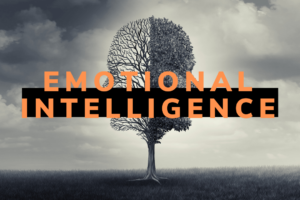
Building Personal Capability: Communication
These are quick notes, disregard typos please.
According to the exam content outline, the following capabilities are assessed:
- 1.1.A – Skill in using communication strategies that inform and influence audiences.
- 1.1.B – Skill in applying verbal, written, and/or non‐verbal communication techniques.
- 1.1.C – Skill in conceiving, developing, and delivering information in various formats and media.
Today’s content I am specifically looking at exam items 1.1.A and 1.1.B
1.1.A – Skill in using communication strategies that inform and influence audiences.
These are the resources I reviewed and studied. Some items may be behind pay walls.
- Influence Emotion to Motivate Action: Communication Techniques to Engage Any Audience (Video) >>www.td.org/videos/influence-emotion-to-motivate-action-communication-techniques-to-engage-any-audience
- Key takeaways: “three types of essential conversations with employees: disciplinary, coaching, and praise. For managers as talent developers, effective communication — including targeted, actionable feedback — can build awareness and action toward better employee performance, and foster a transparent, open, and honest team atmosphere”; Communication should be concise, clear, compelling, credible, confident
- Persuasive strategies: youtu.be/cFdCzN7RYbw (R. Cialdini’s “Science of Persuasion”
- Create the following conditions: Reciprocity: Give to get, Scarcity, Authority (credible), consistency, liking, consensus)
- Delivery is presentation of instructional content and in TD circles focuses should be focused on data from evidenced-based training (pp. 312-313), avoid cognitive overloading (p. 314), and only use value-added items — for examples graphics should be informational more than decorative. (ASTD Handbook)
- Facilitation goal = make conversation easy. Five keys to great facilitation (ASTD Handbook, p. 324)
- Define success
- Prepare relentlessly
- Start with impact
- Engage throughout
- Manage dysfunction
- Excellent Article: Influence Skills for Performance Consultants >> https://www.td.org/newsletters/atd-links/influence-skills-for-performance-consultants
- Key Quote: Kim Barnes suggests that effective influencers consider four key factors in what she labels the influence framework: the influence goal or outcome, the nature of the relationship with the target of influence, specific influence tactics or behaviors, and the situation in terms of the personal, organizational or cultural context of the influence target.
1.1.B – Skill in applying verbal, written, and/or non‐verbal communication techniques.
Concepts from Handbook of Communication Training (amzn.to/3eA1egI):
- Use an audience-centered approach
- Use memorable word structures (e.g., acronyms)
- Use Verbal immediacy technique like “us” “our”, calling trainees by name, creating conversations (ask questions in polite tone)
- Use nonverbal immediacy techniques (e.g., eye contact, smiling)
- Draw on various forms of listening:
- Relational: focus on emotions and feelings
- Analytical: withhold judgement
- Critical: listen for evidence and facts and seek discrepancies
- Task-oriented: look for application of ideas based on evidence
- Trainers should aim for relational listening
General Facilitation Skills
Effective facilitation skills to do in practice (could fit both categories above):
- Display known facts for all group members to see
- Listen for group oriented language (“we”)
- Summarize what you hear as trainer so everyone is “on same page”
- Emphasize areas of agreement
- Encourage differences of opinion
- Monitor time
- Use the nominal-group technique for effectiveness




